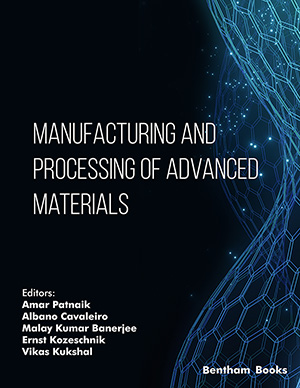Abstract
Aims: This study aimed to investigate the molecular interactions of dextran as a solute with sodium hydroxide as a solvent.
Background: The propagation of ultrasonic waves through solids and liquids offers vital information on the structure of solids and liquids. The molecular interaction in pure liquids and liquid solutions has also been explored using ultrasonic speed estimates. The ultrasonic speed in a fluid provides a cutting-edge, feasible, and trustworthy technique for examining the characteristics of the polymer, amino acid, carbohydrate, and vitamin arrangements, among other things. It is mainly connected to the binding capacities of particles or molecules and has been successfully used in comprehending the concept of molecular interaction in liquid solution. Ultrasonic velocity measurement allows for the precise evaluation of several relevant acoustical characteristics that are particularly sensitive to molecular interactions.
Objective: The acoustic and thermodynamic characteristics were utilised to investigate different types of interactions, molecular motion, and different interaction modes and their effects, which were impacted by the size of the pure component and the mixes. The significance provides subjective data on the nature and quality of particle interactions between solute and solvent in liquid solutions. Acoustic characteristics are important for evaluating the effect of temperature and frequency on the polymer dextran's aqueous sodium hydroxide solvent interactions. The density (ρ), viscosity, and ultrasonic speed (η) at 303 K, 308K, 313 K, 318K and 323K have been measured in the systems of polymer dextran with aqueous sodium hydroxide solution by using a pycnometer, Ostwald viscometer, and ultrasonic interferometer at frequencies at 1MHz, 5MHz, 9MHz, 12MHz, respectively. The acoustic parameters, such as free volume, internal pressure, attenuation coefficient, Rao’s constant, and Wada’s constant, are determined using the experimental parameters, including density (ρ), viscosity (η), and ultrasonic speed (U).
Methods: In this study, a pycnometer, an Ostwald's viscometer, and an ultrasonic interferometer to measure the density, viscosity, and ultrasonic velocity of the solution and compute the thermoacoustic parameters based on the measured parameters were used.
Results: Ultrasonic wave propagation affects the physical characteristics of the medium, providing information about liquid and solution.
Conclusion: The effect of frequency and temperature on thermo-acoustic properties was studied. The aforementioned research has interpreted the nature of forces between molecules, such as hydrogen bonds, charge transfer complexes, and the breakdown of hydrogen bonds and complexes. Intermolecular forces are weak (electrostatic forces between charged particles having a permanent dipole and molecules with induced dipoles). The geometrical fitting of one molecule into another, owing to the variation in shape and size of the molecules, results in structural properties of the components.
Other: In recent years, advances in ultrasonic methods have made them a potent instrument for assessing knowledge about the physical and chemical behaviour of liquid molecules. Due to its versatile pharmaceutical, biological, and contemporary uses, it has drawn analysts' attention to a new area of investigation. Consistent data on the physical and chemical characteristics of a wide range of liquid solutions are required.
Keywords: Ultrasonic velocity, density, viscosity, molecular interaction, thermo-acoustic parameters, dextran.
[http://dx.doi.org/10.1007/s10973-017-6926-8]
[http://dx.doi.org/10.1021/cr980032t] [PMID: 11849019]
[http://dx.doi.org/10.1007/s10973-018-7574-3]
[http://dx.doi.org/10.35940/ijitee.K1445.0981119]
[http://dx.doi.org/10.1007/s10973-014-4019-5]
[http://dx.doi.org/10.1016/j.chroma.2003.10.127] [PMID: 15214660]
[http://dx.doi.org/10.1007/s10973-015-5205-9]
[http://dx.doi.org/10.5530/ijper.54.3.112]
[http://dx.doi.org/10.1021/jp026907w]


























